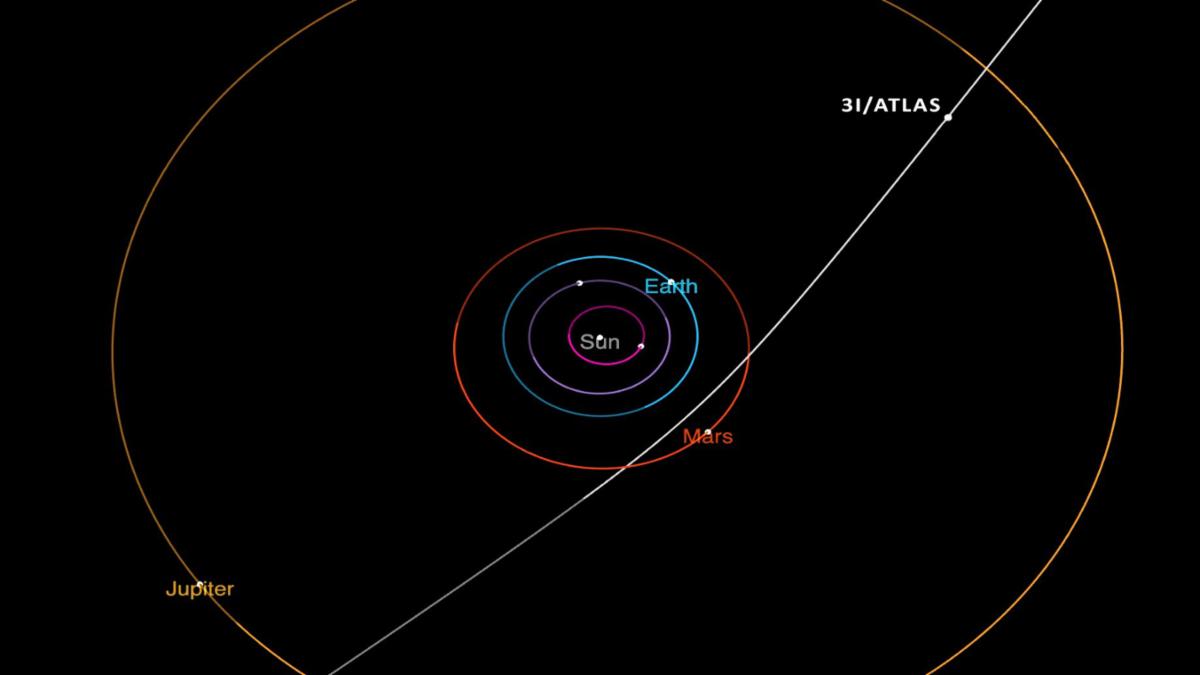Article Body
A team of UK astronomers has identified a mysterious celestial object, named 3I/ATLAS, as possibly the oldest comet ever observed. First spotted earlier this year, the icy body appears to have originated from the Milky Way’s thick disk—a rarely explored region populated by some of the galaxy’s oldest stars.
The discovery, announced this week by a consortium of European observatories, could reshape our understanding of how ancient water-bearing objects move through our galaxy.
What Is 3I/ATLAS and Where Did It Come From?
The comet-like body, officially designated 3I/ATLAS, is only the third known interstellar object to pass through our solar system—after ‘Oumuamua (2017) and Borisov (2019).
However, what makes 3I/ATLAS unique is its highly inclined and steep orbit, which suggests it originated from well outside the galactic plane. Astronomers believe it likely came from the Milky Way's "thick disk", an extended halo of older stars that orbits above and below the flat disk where most stars—including our Sun—reside.
“This is not just another space rock,” said Dr. Eve Callahan, a lead astronomer from Queen’s University Belfast. “We are potentially looking at material that predates the formation of the solar system by billions of years.”
A water-rich comet in Deep Space
Spectroscopic analysis of 3I/ATLAS indicates it is rich in water ice—a crucial clue for researchers studying the building blocks of life and planetary formation.
Unlike ‘Oumuamua, which had no visible cometary tail and sparked debates about its origins, 3I/ATLAS displays a faint but consistent outgassing trail, confirming its classification as a comet rather than an asteroid.
Its ice-rich composition also implies that it spent most of its existence in deep cold regions, shielded from solar radiation and cosmic erosion—preserving its ancient structure.
Why the Thick Disk Matters
The Milky Way’s thick disk is a relatively under-studied region. It hosts stars that are nearly 10 to 13 billion years old—much older than our Sun. If 3I/ATLAS originated here, it could offer a rare, preserved sample of the early galaxy’s material.
Dr. Luca Moratti of the European Southern Observatory explained:
“Objects from the thick disk may hold secrets about the formation of our galaxy itself. If 3I/ATLAS formed there, we’re effectively holding a 13-billion-year-old snowball from the galactic attic.”
Could It Have Brought Ancient Organic Material?
Some researchers are now speculating whether 3I/ATLAS might contain primitive organic compounds, offering a window into how life-essential molecules spread across the galaxy.
Although the object is currently traveling at extreme velocity and will leave our solar system within months, observatories worldwide are racing to collect as much data as possible before it vanishes forever.
NASA’s James Webb Space Telescope has already reoriented to monitor the object’s chemical spectrum, while the European Space Agency’s Gaia mission is assisting in mapping its precise trajectory.
What’s Next for the Study of Interstellar Visitors?
With more powerful space telescopes and AI-enhanced sky surveys, astronomers expect more interstellar objects like 3I/ATLAS to be detected in coming years.
The Vera C. Rubin Observatory, expected to go online in 2025, could revolutionize how fast we spot and track such fleeting visitors.
“This may just be the beginning of a new era of galactic archaeology,” said Dr. Callahan. “Each object like 3I/ATLAS is a time capsule traveling billions of years to reach us.”
Conclusion
The discovery of 3I/ATLAS, possibly the oldest comet ever seen, is a monumental leap in interstellar science. If proven to originate from the Milky Way’s thick disk, it would not only be a first-of-its-kind visitor but also a messenger from a forgotten age of the universe—rich with clues about the formation of stars, planets, and possibly even life itself.
🟨 FAQ:
Q: What makes 3I/ATLAS different from other interstellar objects?
A: Unlike ‘Oumuamua and Borisov, 3I/ATLAS has a steep trajectory from the thick disk and is water-rich, suggesting it’s both older and better preserved.

Comments